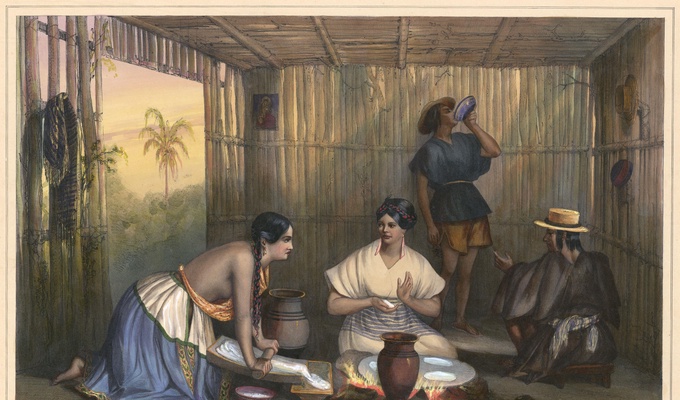Nixtamalization is a process for the preparation of corn, or other grain, in which the grain is soaked and cooked in an alkaline solution, usually limewater, washed, and then hulled. The term can also refer to the removal via an alkali process of the pericarp from other grains such as sorghum.
Nixtamalized corn has several benefits over unprocessed grain: It is more easily ground, its nutritional value is increased, flavor and aroma are improved, and mycotoxins are reduced by up to 97%–100% (for aflatoxins).
Lime and ash are highly alkaline: the alkalinity helps the dissolution of hemicellulose, the major glue-like component of the maize cell walls, and loosens the hulls from the kernels and softens the maize. Corn's hemicellulose-bound niacin is converted to free niacin (a form of vitamin B3), making it available for absorption into the body, thus helping to prevent pellagra.
Some of the corn oil is broken down into emulsifying agents (monoglycerides and diglycerides), while bonding of the maize proteins to each other is also facilitated. The divalent calcium in lime acts as a cross-linking agent for protein and polysaccharide acidic side chains.
As a result, while cornmeal made from untreated ground maize is unable by itself to form a dough on addition of water, the chemical changes in masa allow dough formation. These benefits make nixtamalization a crucial preliminary step for further processing of maize into food products, and the process is employed using both traditional and industrial methods, in the production of tortillas and tortilla chips (but not corn chips), tamales, hominy, and many other items.
